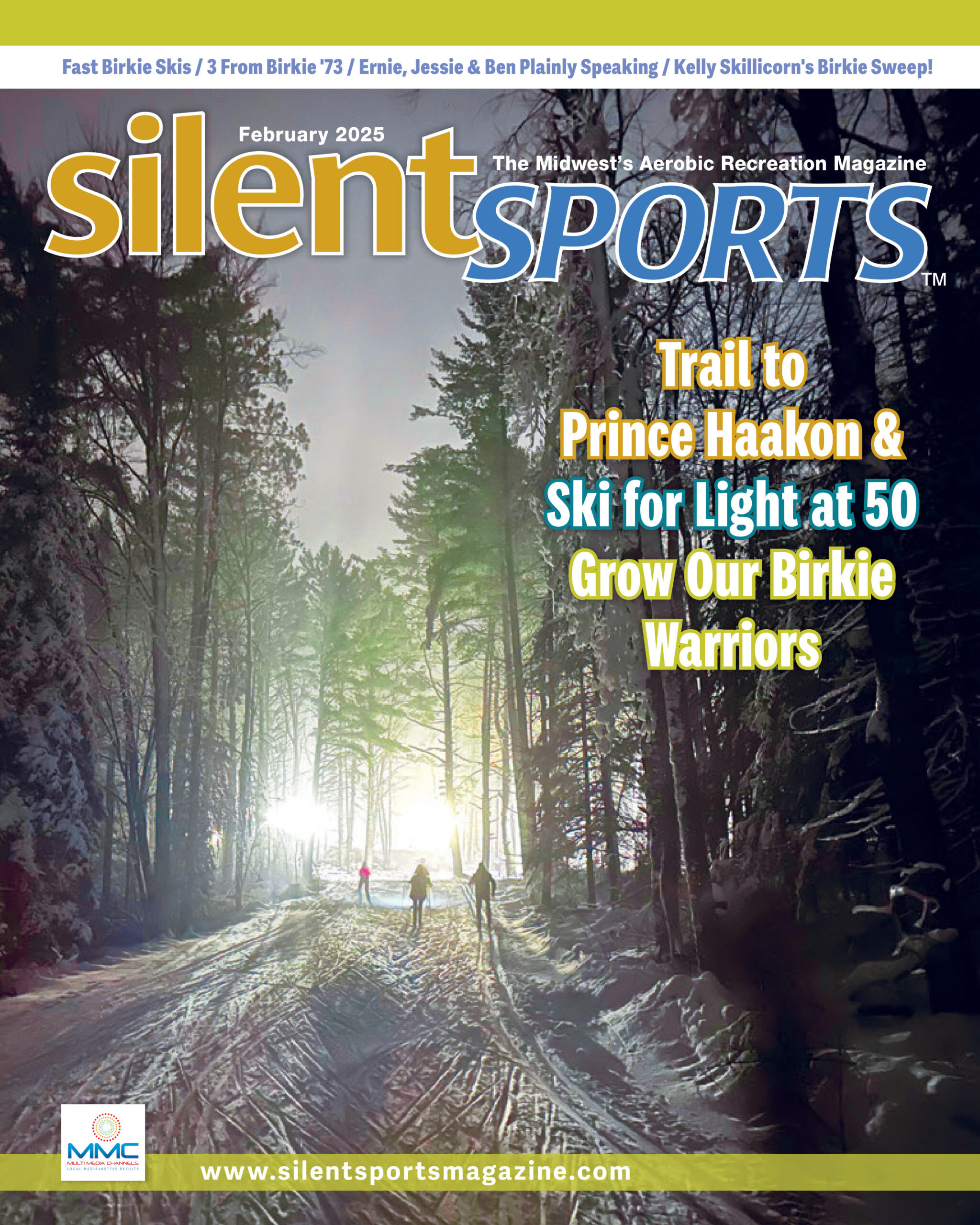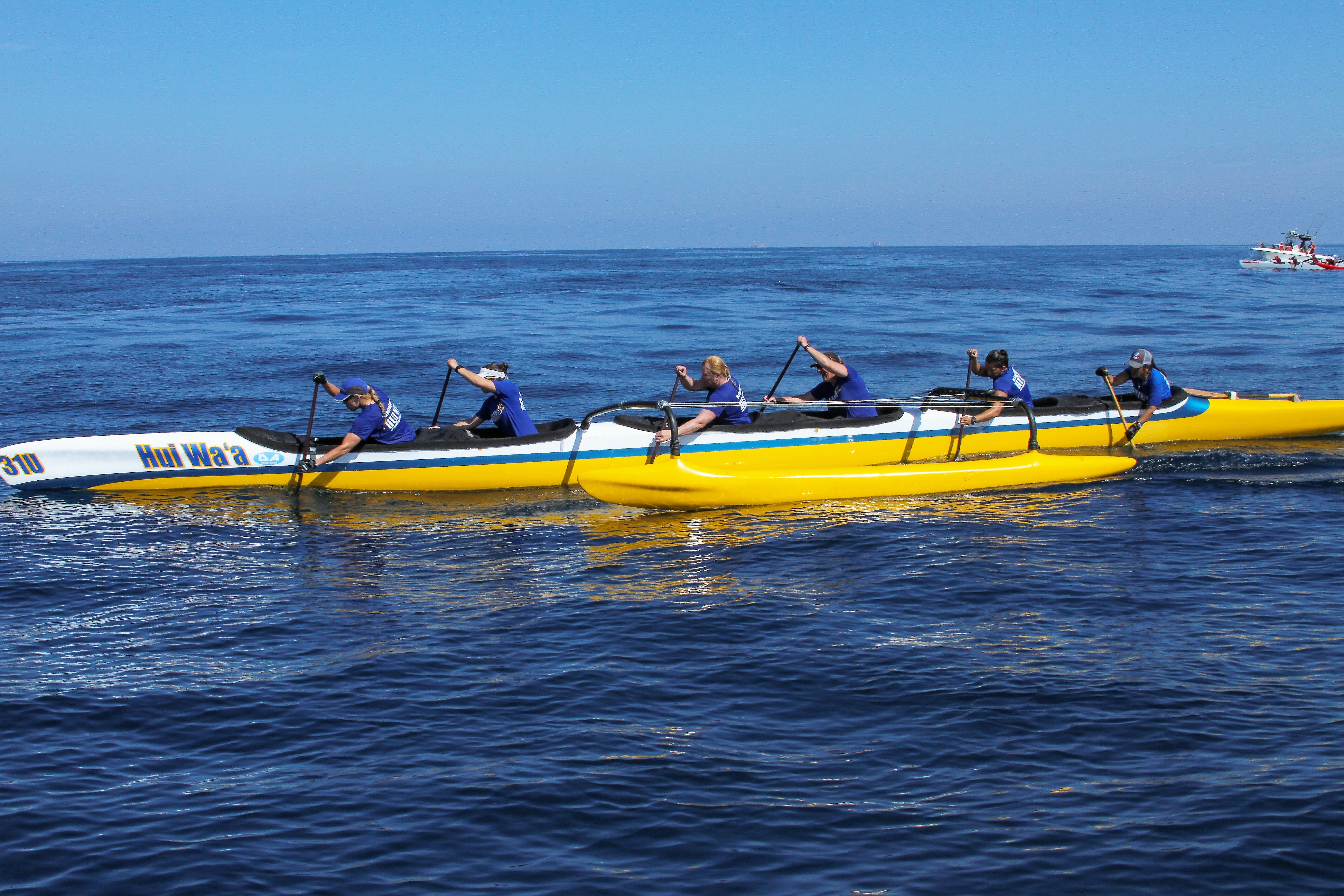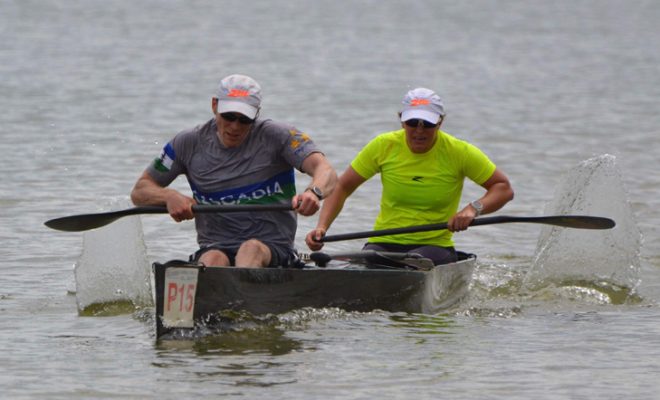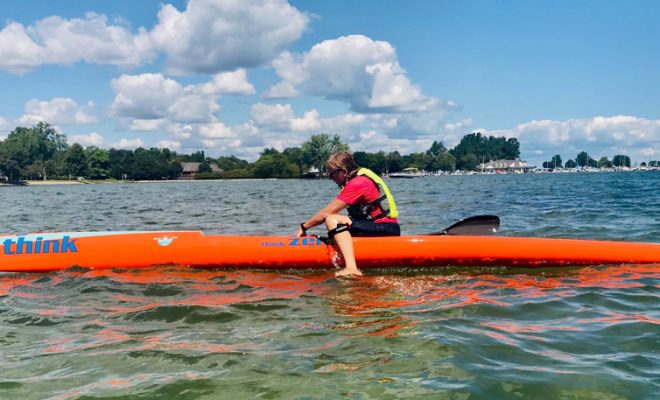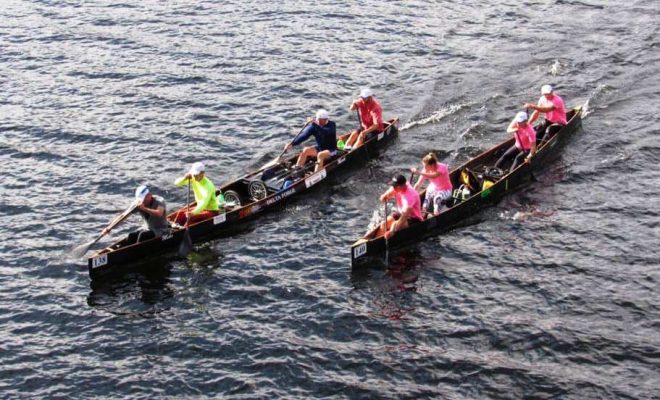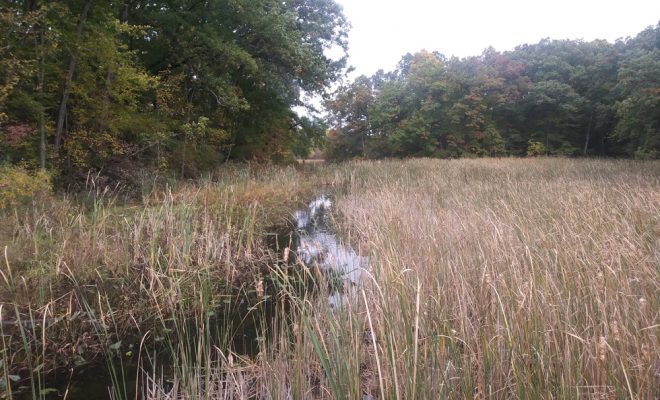You’re going the wrong way!
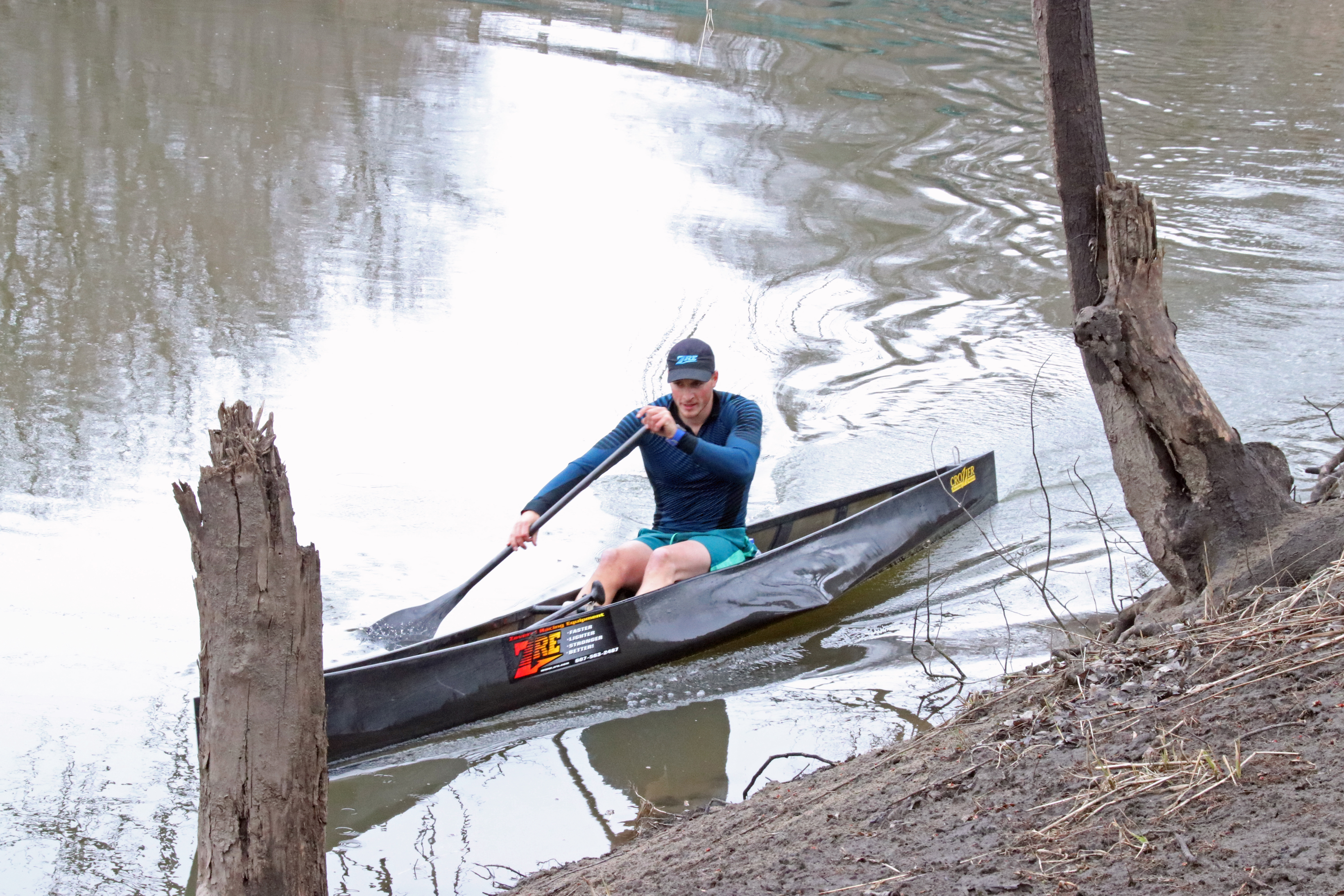
John Fritz photo
PADDLING
BY REBECCA BARTON-DAVIS
In April I had the opportunity to travel to the Pecatonica River in northern Illinois for a weekend canoe training camp/clinic on upstream paddling and river reading.
If you haven’t had a chance to check out the “Pec,” I would highly recommend it! There is a 58-mile (and counting!) water trail and a wonderful forest preserve system in the surrounding areas.
Paddling upstream is a skill that anyone who wants to paddle without having to have two cars to shuttle around, or to save the sanity of their spouse, needs to develop.
Going against the current may be harder, but it gives a completely different perspective on a stretch of river – similar to hiking up and down a mountain. By paddling upstream, we learn to read the current better for downstream paddling. Current appears more defined when looking upstream, and feedback is more immediate when choosing lines, so upstream paddlers usually learn to take better lines when traveling downstream. While not as popular, it is also safer to paddle against current on un-scouted areas or in high-water conditions. If it can be paddled up, it most definitely can be paddled down. Also, the approach to an obstacle is slower, allowing for more time to make adjustments and decide on a course of action. Even in cold conditions (hopefully we are done with those for this year), paddling upstream first means a quicker trip back to the car in order to warm up if an unplanned swim becomes part of the outing.
The first tip of paddling upstream is to paddle close to shore. Some of the top canoe racers will paddle so close that some strokes are actually on the bank instead of in the water, but even if you don’t get that extremely close, staying near the shore gives the opportunity to “hide” behind anything that is blocking the current. Sometimes these blockers will have eddies behind them with current flowing upstream instead of downriver for an additional boost. The shoreline, islands, rocks, trees in the water, even sand bars can disrupt the current’s flow and give some protection to paddlers. Using these “obstacles” as a kind of shield requires less effort than paddling in the middle of the river. Being close to the bank comes with its own set of challenges, like a higher chance of hitting debris (rocks, stumps, etc.) and having less margin for error in steering because there is simply less room, but the challenge keeps things exciting. I often find that time passes faster when paddling upstream because I am more focused on the task at hand.
Generally speaking, river currents tend to be strongest on the outside of a corner, so it is beneficial to cross the river between turns to avoid the currents. This will also make a tight turn more manageable, since the shallow side will be to the inside of the corner, giving paddlers the ability to “sweep” their strokes on the outside to make the turn. Where the crossing occurs can affect how much speed you lose in the middle of the river. Crossings should take place at strategic points, often near an obstacle that was providing an eddy, or at a narrowing of the river where the distance in the current can be covered quickly. When completing river crossings, it is helpful to put more power on the paddle and take an angle that doesn’t leave the paddler fighting the current any longer than necessary. While it doesn’t pay to be perpendicular to the current and head straight between banks, a 45-degree angle while crossing is a good rule of thumb when trying to find the best line.
Once paddlers get a knack for paddling close to shore and crossing rivers, cornering in the current can be the next challenge to overcome. In the zeal to stay out of the flow, paddlers often don’t anticipate how hard the current will catch the bow when they get to the apex of the corner. By not anticipating the push of the water, the bow of the canoe is pushed downstream, which causes the stern to be angled towards shore, making the turn difficult if not impossible. The key when corning upstream is to keep the stern further away from shore than the bow at the beginning of the turn. By setting up at an angle going into the turn, the actual corner will require less steering than it would otherwise. This will help you maintain speed, which also makes completing the turn easier.
Practice will take upstream paddling from a mundane chore to a fun challenge. Mastery will take time, but overall skill, technique and strength will improve. If you haven’t had a chance to try it yet, get out there this summer and see what the river looks like when going “the wrong way.”

